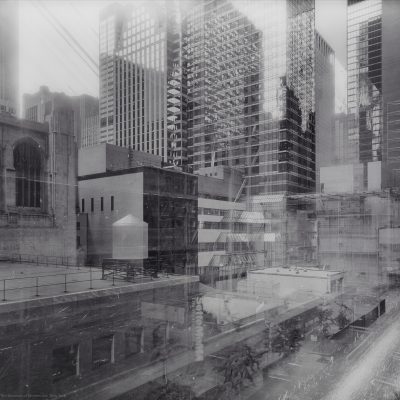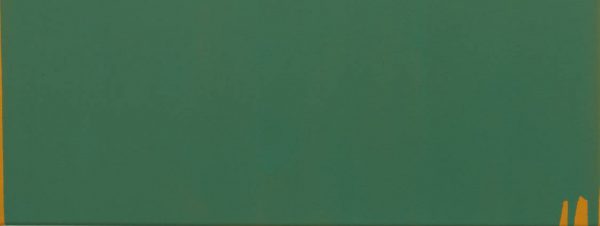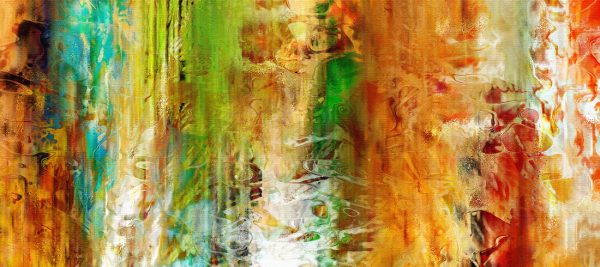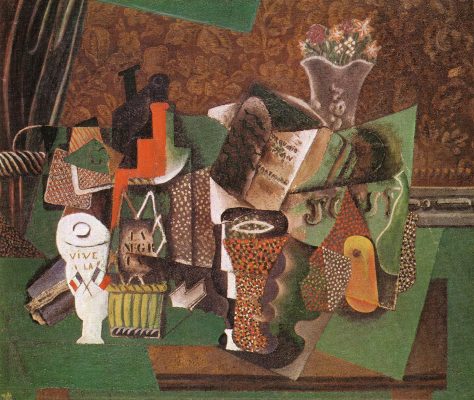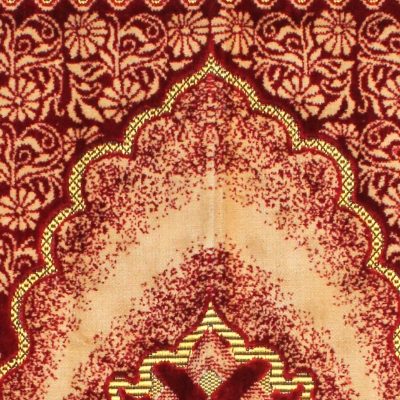Bernard, whenever he thought of Geoffrey, would remember his gait on the afternoon of their first meeting. Geoffrey walked with the confidence of a banker, mixed with the aloofness of a cat. Although they had been introduced at a party previously, that afternoon was their first one-on-one encounter, what Geoffrey called their original pas de deux. The exhibition they would soon agree to co-curate would never happen.
Bernard had moved to New York for graduate studies only a month earlier. The afternoon they met, the temperature was above ninety. Bernard told Geoffrey via email that he wanted to buy a Portuguese egg custard, the ones sold in Chinatown bakeries, which he had taken to eating since arriving in the city. He could have purchased those custards in the Chinatown back home, but at the time he rarely did. There was a place he liked on the corner of Forsyth and Grand, and he suggested they meet at the Grand Street entrance to the D train, right next to the handball courts. Geoffrey replied, ‘We can walk from there’. Through the crowds and the looming late summer haze, Bernard recognised the curator as he emerged from the subway, with his self-possessed way of walking. Bernard raised his hand in something resembling a wave, but the word ‘wave’ is incorrect; whatever it was that he did with his hands, this something, this quasi-wave, said, in his unsure way, hello. Soon Geoffrey was hugging him. ‘I’m looking forward to our discussion,’ Geoffrey said. ‘We have so much to talk about.’
After Bernard purchased his custard, he offered the curator a bite, which Geoffrey declined. They started to walk. Heading south on Elizabeth Street, they passed an elementary school. The pastry of the custard was dry and flaky. Bernard wiped the sweat from his forehead. The skyscrapers of downtown and the tenements of Manhattan’s Chinatown obscured the horizon. Geoffrey was mostly silent, and Bernard wondered when he would bring up the subject of their meeting.
They hardly spoke or bothered wondering how half an hour later, after meandering through Lower Manhattan, they had ended up at Sixth and Canal near an abandoned corner that had been converted into a sculpture garden. The garden, which was a public commission, was already locked for the evening, but they peered through the fence. Geoffrey mentioned that he knew the curator, someone whom, he said, he should introduce to Bernard. They continued toward the Westside Highway through TriBeCa as the sun set over the Hudson.
A group of teenagers loitered on the promenade. Bernard and Geoffrey walked north along the river. And finally they began talking about their intended subject, an elderly artist named Gloria Steinberg.
Geoffrey would be silent for long stretches and then suddenly provide some apparently unrelated fact or anecdote. The reflection of the setting sun glimmered on the river. They turned the corner at Fourteenth Street and walked up Tenth Avenue. A starling swooped down from a water tower on a building – ‘birds which,’ Geoffrey said, ‘were introduced to North America by a Shakespeare enthusiast in 1890. The man, Eugene Schieffelin, brought every bird mentioned in Shakespeare to Central Park, including somewhere between sixty and a hundred starlings. That Shakespearean litany of avifauna spread across North America, the starling being the most invasive, making its way as far as the West Coast. I see them in my backyard in Berkeley,’ he said. ‘You must visit.’ And then Geoffrey would go silent, his eyes darting in the opposite direction.
As the sun set, the temperature cooled, and they continued until they reached Nineteenth Street. They stopped at the Kitchen to see if anything was happening that evening, and bought tickets for a dance performance that was just about to begin. When Bernard scanned the crowd, he thought he recognised someone, someone who looked familiar from back home, some guy who appeared to be on a date. This dude was smiling, nodding his head, while his date, smiling radiantly, introduced him to some people. The lights dimmed. The performance was about to begin. Bernard turned his attention to the dancers.
Bernard and Geoffrey had met in Vancouver, after Geoffrey had been flown in to conduct studio visits and give a talk at one of the local universities. They had been seated across the table from each other at a dinner party, and started talking. Geoffrey asked him what he thought of a certain artist. Bernard, in hushed tones, leaned in to the curator and said, ‘I don’t really like him.’ Geoffrey flirtatiously said, ‘Right answer. I don’t either.’ They spent the rest of the evening deep in conversation. When Bernard told Geoffrey that he would be moving to New York, the curator gave Bernard a mischievous smile and said, ‘How wonderful. In fact, I think you might be able to help me with something. Let me introduce you to someone.’ Bernard said, ‘Oh, of course,’ to which Geoffrey replied that they would discuss it via email. When Bernard moved to New York, Geoffrey had sent him the telephone number for Gloria Steinberg, and asked him to contact her. ‘I want you to assist me with something. A curatorial project,’ he wrote, but he demurred to explain anything else or elaborate. ‘Go and visit her. She is wonderful. If this were the eighties,’ Geoffrey added in the email, ‘I would send you with a letter of introduction, but if I give you her number and you introduce yourself, telling her simply that you’re a student, which is, of course, true, it will be fine. Better, in fact. There is no need to mention me. She is very hospitable. And I want my involvement, at this point, to be a secret.’
During their walk, Bernard told Geoffrey about his first visit with the artist, which had occurred a week prior. Gloria Steinberg was a neglected modernist painter and one of the only female members of the first generation of the New York School. By the time Bernard moved to New York, she was in her late-eighties and in bad health. He knew that it would be an opportunity to speak with her about the New York art scene of the fifties: a time that, for Bernard’s generation, existed only in black and white photos. When Bernard arrived, Steinberg explained that, at her age, she had had to give up drawing and painting, but still she enjoyed having guests. She sat at the table across from him in a wheelchair and asked him questions in a manner rather excited for someone over eighty. Slight in frame and dressed in a modest cardigan, she laughed easily, with generosity and sharpness. She insisted that they enjoy some brandy, which she had her nurse Nancy pour for them. Gloria’s hands shook as she lifted the snifter to her mouth; her elegant blue veins throbbed. ‘We had a wonderful visit,’ he said to Geoffrey, but he had very little to report. He had no idea what he was supposed to report, so as they walked, he just told Geoffrey how much he had enjoyed meeting her, and how glad he was that Geoffrey had suggested he contact her.
‘And do you think Gloria liked you?’
‘Well, she’s invited me back.’
‘Did you mention me?’
‘No, why?’
‘Oh, I love her very much, but we last parted on bad terms, and, as I said, I don’t want her to associate you with me, or at least not yet. I want this project to return me to her good graces. So you’ll visit her again?’
‘Yes.’
‘When you do, make sure to go upstairs to the second floor of her apartment.’ It seemed as if Geoffrey wanted to add something else, his face suppressing a self-satisfied smirk. The performance began.
Before his first meeting, Bernard read an essay about Gloria in the New York Review. Steinberg’s earliest exhibitions in Europe had been with the surrealists, and then, in 1939, she’d fled Europe to escape the Nazis. As well as showing with many of the New York School painters, Gloria befriended Peggy Guggenheim, James Agee, and Mary McCarthy, among others. The article contained a photograph of Steinberg as a young woman. Standing next to her was Samuel Frank, at the time her husband, who himself was an accomplished illustrator. In the picture, Steinberg and Frank appear in front of one of her large-scale drawings. The drawing in the picture depicts a cartoon-like man wielding what appears to be a bow while riding a horse; a bird sits atop the horse’s head with the sun behind them. Steinberg leans flat against the drawing, while her husband is standing, his hands in his pockets, his head tilted and shoulders slouched. He wears a pseudo-military uniform, and she is in a simple black dress, the lapel broached with a safety pin. After their divorce, the pair remained friends, and Steinberg focused on what mattered to her most: drawing. Frank would call on the telephone and they would talk for hours. She seemed unconcerned that the pope of art critics, Clement Greenberg, who had been the first to praise her in print, ultimately dismissed her for ‘lacking ideas’ – a phrase as vacuous as it was unsubstantiated. A damning review from Greenberg could marginalise anyone. After his critique was published, the momentum in Steinberg’s career stalled. While she continued to make work, other critics, taking their cue from the papal decree, began ignoring her. She survived through the seventies onward largely due to a devout but small collector base, but retrospectives at the major museums eluded her. She focused on the only thing that mattered to her – her art. There was, Bernard would discover later, more to the story.
When Bernard visited her, he forgot to ask about those things; rather, as was his habit, he let her lead. She asked him, ‘What was the rhythm of your hometown?’ and, ‘Do you draw?’ As a result, he never heard the stories he wanted to. He had no idea why he was there anyway.
At the Kitchen, with Geoffrey, the dancers continued to move halfway between grace and frenzy. They watched the dancers, or dance troupe, or the work of a choreographer, or a performance art piece; they did not know exactly what they were watching, because they had neglected to take a playbill when they entered the dark theatre, and yet it captivated Bernard. He thought of Gloria, of course, who had spent the majority of her life in the shadow of the fame that she could have had, where she drew and painted without interruption.
The body of one of the dancers was lean; he could see in her face the curve of her lip. They moved around the dance floor. The face of her partner writhed in contortion.
After the performance, Geoffrey and Bernard walked over to Ninth, where they found a French bistro; they drank Ricard on a street-side patio as the traffic rushed down the avenue.
Bernard neither knew the city as well as he pretended nor as many people as he claimed. Walking became both a way of acquainting himself with its immensity and of passing the time. Geoffrey’s presence provided a diversion from the solitude of his daily routine. No matter how much he tried to learn the city, every now and then, he would still become disoriented when he left the subway and would walk in the wrong direction for blocks. That night on the patio, the anise in the Ricard felt refreshing. Geoffrey had been in the city to meet with some collectors from whom he needed to borrow a work for an exhibition he was curating at the Wattis in San Francisco, where he worked at the time, a city in which he had lived on and off for the past twenty years, with the exception of his tenure in New York as an assistant curator at MoMA (‘I come here as rarely as I can. These people are wolves’). As they finished their drinks, Geoffrey suddenly got up, said he had to go and meet some people. ‘Let’s meet up again tomorrow to continue discussing Gloria,’ he paid the bill, and disappeared.
As Bernard walked toward the subway along Twenty-Third Street, he thought of the guy he had seen at the Kitchen, the one who seemed to be on a date. Bernard had never realised it, but he had seen this dude around the city a number of times and yet could not place him. Even more odd, Bernard was sure that he was from Vancouver. By his looks, the way he dressed, and his approximate age, he guessed he must have seen him at the Sugar Refinery, a now-defunct music venue in Vancouver that had closed in the early part of the 2000s, a venue that Bernard and his friends associated with the time before 9/11. He wondered who this dude, this apparition from a time before the bombings, was.
Bernard saw this dude again the next morning at Union Square, sitting on the steps near the subway entrance, where Bernard was waiting for Geoffrey, who had texted him the previous night: ‘Sorry I had to run after the pastis. Let’s meet at Union Square tomorrow morning 10 a.m.’ Bernard furtively glanced at this dude. Here, at Union Square, he looked somehow lost, not in the sense of losing one’s way in space, because he seemed comfortable enough in the city, but lost in the sense of self. He stared blankly at the traffic on Fourteenth Street. Bernard checked the time on his Nokia. Geoffrey was late. It was five past ten in the morning, and it was already well above eighty. Bernard searched for a newsstand to buy a bottle of Vitamin Water.
With his drink in hand, he returned to the same spot, near the dude, but positioned himself in such a way that his body language made clear that he did not want to be approached. He thought he saw the dude look at him. Bernard checked his phone. Geoffrey had texted: ‘Apologies. Can’t make our date. Get in touch later.’ Then Bernard looked at the stranger. He glanced back. They both turned away quickly, as if in acknowledging each other they had accidentally confronted their own doppelgänger; the dude pretending to fiddle with his backpack, as though to unjam a broken zipper, Bernard’s gaze ricocheting across the street, landing on the debt meter next to the Virgin Records, its numbers continuing to climb. Cabs honked their horns. The canopy of trees above rustled. He overheard a homeless man rant about socialism near a vendor who sold t-shirts that read ‘Homeland Security: Fighting Terrorism since 1492’, accompanied by a picture of Geronimo. He avoided observing the dude again. His mind wandered. Bernard imagined what Union Square must have been like in the late eighties, before the Whole Foods and the NYU dorms, before the farmer’s market and even Barnes and Noble, when groups like Boogie Down Productions or A Tribe Called Quest would play shows at the nearby nightclub. He left his seat on the steps and walked over to the shoe store on the corner of Fourteenth and Broadway to browse sneakers, the hightops that all the kids on the A train uptown in Harlem were wearing, knowing that he could never pull them off.
*
The two men gazed out of the window of an uptown diner. After having cancelled on Bernard via text message the previous day, Geoffrey had suggested they meet near Fort Tryon Park. ‘I’ll make up for yesterday by taking you to this amazing restaurant.’ He had led Bernard up Broadway to a Puerto Rican diner, where Geoffrey had asked in Spanish for two orders of pescado frito. The curator continued to glance through the window to watch the passersby. His face was restrained but placid. Bernard waited for Geoffrey to speak. The curator took out a package of Sweet N’Low, tore it open and poured it into his Sanka.
He said he needed Bernard to get something for him. He paused for a minute. Somewhere upstairs among Gloria’s files, he said, was a particularly important letter that she refused to give him, a note she had written to Clement Greenberg that indicated that either she had had an affair with him, or that she had refused the critic’s advances. ‘I want to use it to prove that her obscurity in the history of modern art was, in fact, engineered by a jealous man. If this letter exists,’ he insisted, as he tossed his spoon onto the cup’s porcelain saucer, ‘she has refused to let me or any other curator or critic see it. If I could get my hands on it, or even my eyes on a reliably detailed digital reproduction, I would have the piece of information that I need for the essay I’m writing – one that would lead us to the exhibition I want to curate, which perhaps you could co-curate with me. No one knew whether the letter existed, but it was suspected that it did. There is some mention, in her correspondence to Samuel Frank, of what she described as “a note I sent to Clem”. And, then, of course, all the unverifiable but reliable gossip I’ve heard from a number of other sources, all of whom want to remain anonymous. There is no doubt that something happened between Greenberg and Steinberg. But I have no proof. One of my sources hints that he might come forward after Gloria dies, but he jokes that he’ll die first, which is probably true now, because he was diagnosed with cancer last month. I’m working against time.’ Geoffrey sipped his Sanka. The letter, he said, would lie among her files in a cabinet on the second floor of her apartment. ‘I’m positive,’ he said, ‘because there were no other known places she kept her papers. You would not even need to steal the letter, because that,’ he repeated, ‘would not be necessary: all you have to do is photograph it. I only need proof of its existence. And the ability to quote from it.’
He insisted that he could not go to her apartment himself. ‘I simply cannot,’ he said, without providing a reason. The force of his conviction almost frightened Bernard. Even if he could engineer a meeting, Geoffrey continued, he certainly would not be able to riffle through the file cabinets on the second floor, whereas Bernard, he said, should be able to search for the file undetected. Bernard would be merely a student researching her life and work. Nancy, her live-in service, rarely went upstairs. For the time being, from what Geoffrey understood, Steinberg had no assistant, no secretary, and Nancy had not been trained to look after her professional effects. So, the operation – for he called it that, an operation, pausing for emphasis – would run smoothly.
Bernard stammered. Geoffrey was asking Bernard to steal, if not an object, then information inscribed on an object, from an invalid woman who would be defenceless against, or even cognizant of, him taking it: a letter, in fact, that she had refused to give Geoffrey when he had asked fifteen years ago. Geoffrey said that he assumed that she had forgotten about the request; her memory had started to deteriorate. ‘The only harm it could do,’ he said, ‘would be to Greenberg’s reputation, which is already tarnished, a little more dirt won’t hurt him, maybe a scandal would rescue him from the irrelevancy he’s slipping into, and it definitely would help Gloria. It could mean that she dies in her rightful place among the New York School, instead of as a footnote, which is the way she is currently discussed – except, of course, among a small coterie of outdated “her-story” feminists who overinflate Gloria’s place for ideological reasons. I am trying to forge a middle ground for her, one where her place in the art of the mid-century will be acknowledged without resorting to reductive socio-historical critiques, but I can’t do this without that note, I can’t do it without proof, without evidence.’
*
The next time Bernard visited Gloria, his stomach felt queasy. His company clearly thrilled her. She promptly asked him to tell her which magazines he had been reading, what articles had interested him. He told her about a recent reconsideration of Kafka in the TLS. The author, he said, was trying to argue that the legal documents Kafka had written while at work constituted an important part of his literary output, a sort of key to the themes of The Castle and The Trial.
Gloria told him that she thought that idea was terrible. ‘Kafka’s greatness,’ she said, ‘rests on the novels and stories alone. His work needs no minor scholarly consolations. It is great not because it is social, which those documents must show, but because it sees through the social into something else, something more profound. Nothing a critic can write about his work will change what it means, and even if no one reads it, it will not change what it means, it would not diminish its greatness. This whole desire for fame,’ she said, ‘even among great artists, is pointless. It was like that in the fifties. If you wanted to be famous, all you had to do was paint big. Big canvases! Huge! It said nothing about their greatness as art. And now these critics think they can master over the words of Kafka! Can you imagine if someone said those cheap doodles Dali made for money were suddenly considered the key to his work? But I never liked him personally,’ she said. ‘And his work was too phallic, too much about men. He was – unpleasant to be around. But my ideas may be old.’
Bernard smiled and said, no she was right, he agreed with her, but the notes might be interesting to read. Gloria asked Nancy to pour them a second glass of brandy. Again, her hand trembled slightly as she took the snifter to her lips.
They talked for another hour, and then Bernard ventured, ‘I would very much like to see your work.’ Gloria, of course, was delighted, and told him that Nancy would show him upstairs, where decades of work that Gloria could no longer access were stored, confined as she was to her wheelchair, unable to ascend the staircase.
Files of un-catalogued drawings and paintings lined the walls. Otherwise, the room was empty. The curtains were open. Except for the light that drifted through the front window, sunning a portion of the hardwood floor, the room was dark. Steinberg’s paintings were in racks against the wall.
He sat down cross-legged on the hardwood in front of the cabinet. How could he do what Geoffrey was asking of him? He did not even know what he was looking for. A note – but of what size, and written when? It was no use. It made no sense. There were too many papers. And besides, what was he doing? Stealing a letter, or, more precisely, making a digital reproduction of a letter, against the wishes of a woman who trusted him. Gloria had lived a life that Bernard never would. To Bernard, Gloria embodied a direct and individual connection to people and events that he could only understand abstractly as ‘history’. He was in awe of her as both a person and a symbol. And yet, if he was honest with himself, he had to admit that he also didn’t know what he thought of her work. The reason she had not been canonised might be simpler than either Geoffrey or the revisionists propose: maybe, he thought to himself, these paintings are just not good enough. Perhaps her genius was not the legacy of her work but the way she was able to live her life exactly as she wanted to. He respected that, or her, even more than the person he admired, but in some ways the paintings seemed mediocre – or, at least, not of the same accomplishment of Pollock or even Newman. They were the testimony of a life, not paintings that measured qua paintings. He felt underwhelmed by them. One, which he lingered on, was a series of expressive brush strokes in green. It seemed to be more of an exercise than a finished work. He imagined encountering the painting at the Met or one of the other major museums. What would it look like next to a Rothko? He wondered if Greenberg was right. Perhaps her restlessness was not so much a stance as an inability to focus on a subject. He kept browsing through paintings, not focusing on any one in specific, letting each pass his gaze. Perhaps he ought to tell Geoffrey he couldn’t complete this operation. But then what would Geoffrey do? Bernard didn’t want to lose Geoffrey’s friendship. He looked at the paintings. On first glance the oil paintings appeared to be hard edge abstractions, but on closer inspection, the way in which she applied paint over parts of the canvas created layers that formed shadowlike shapes beneath the surface. One was a composition of black dots on swatches of a light yellow, where previous dots, still barely discernible, had been painted over. Another was composed of two basic colours: blue and white. A series of (white) lines outlining (blue) rectangles were placed in relation to one another; the combination created frames within frames, so that an asymmetry of lines allowed endless ways for the eye to form rectangles. Restless, Bernard walked over to the adjacent room where Steinberg housed one of her massive works – pieces she referred to as ‘collages’. They were wall-sized collages made of strips of coloured paper. One was installed, as it had been, for twenty years. Its pieces rustled slightly in the wind. It suddenly occurred to Bernard that he ought to think about these collages in relationship to the paintings: that they acted as a gloss. The colours, the forms, all in oblique ways related back to the paintings. One, set up in the room adjacent to the painting rack, comprised three ersatz walls so that, when installed, the viewer could walk around them, between the wall and the back of the wall on which the collage hangs. Construction paper, vellum, and onionskin paper were applied with a mixture of gouache and acrylic. Neither painting, nor installation, nor collage, they explored the affinities between all three. And suddenly Bernard understood what Steinberg’s work was doing. The modernist critics had got it wrong: the work underscored not only the tensions within a single autonomous painting but also the networked relations that make these compositions readable as a whole. They needed to be seen as one large work. So it hardly mattered if one of her paintings was ‘mediocre’ compared to the quasi-heroic gestures of abstract expressionists. They were not about that; they were patient, and they were serial. It was about the way they related together in an ensemble. Her work anticipated a whole generation of artists, many of whom had never seen Steinberg’s work, partly because, at least Geoffrey believed, her place in art history had been deliberately obscured by Greenberg.
After spending some time with the ‘collage’, Bernard returned to the front room, and looked through a cabinet of her drawings. He stopped on a graphite portrait of Peggy Guggenheim. The drawing was unfinished, but it had a ragged elegance to it. The shading around Guggenheim’s face suggested an existential darkness. Something lurked in the lines of the sketch. More convinced than ever that these works needed to be seen, he went back to the cabinets that contained her correspondence.
He would find what Geoffrey asked him to find, and he would take as long as he needed to do so. It eluded him that afternoon. He exhausted many of her cabinets, taking so long, in fact, that Nancy commented when he finally descended the staircase. She thought he’d disappeared – poof!, she pronounced, gesturing with her hands, the diphthong of that onomatopoeia echoing through her heavy West Indian accent, and then she laughed, shaking her head. Gloria, she said, was taking a nap. It would be best if he did not wait for her to wake. Nancy could set up their next meeting.
Bernard continued to return and visit the old painter until he found what Geoffrey was looking for.
